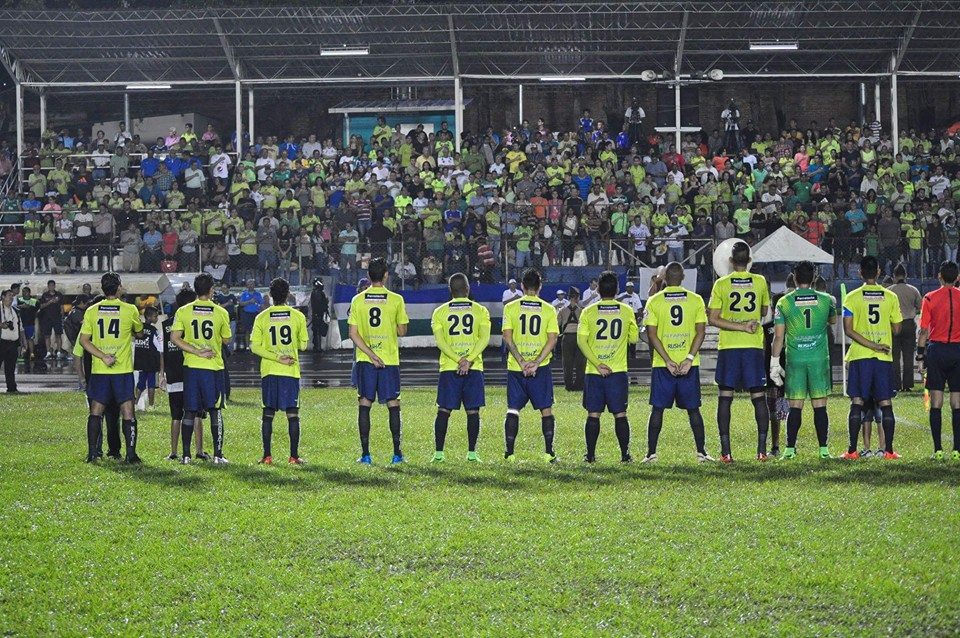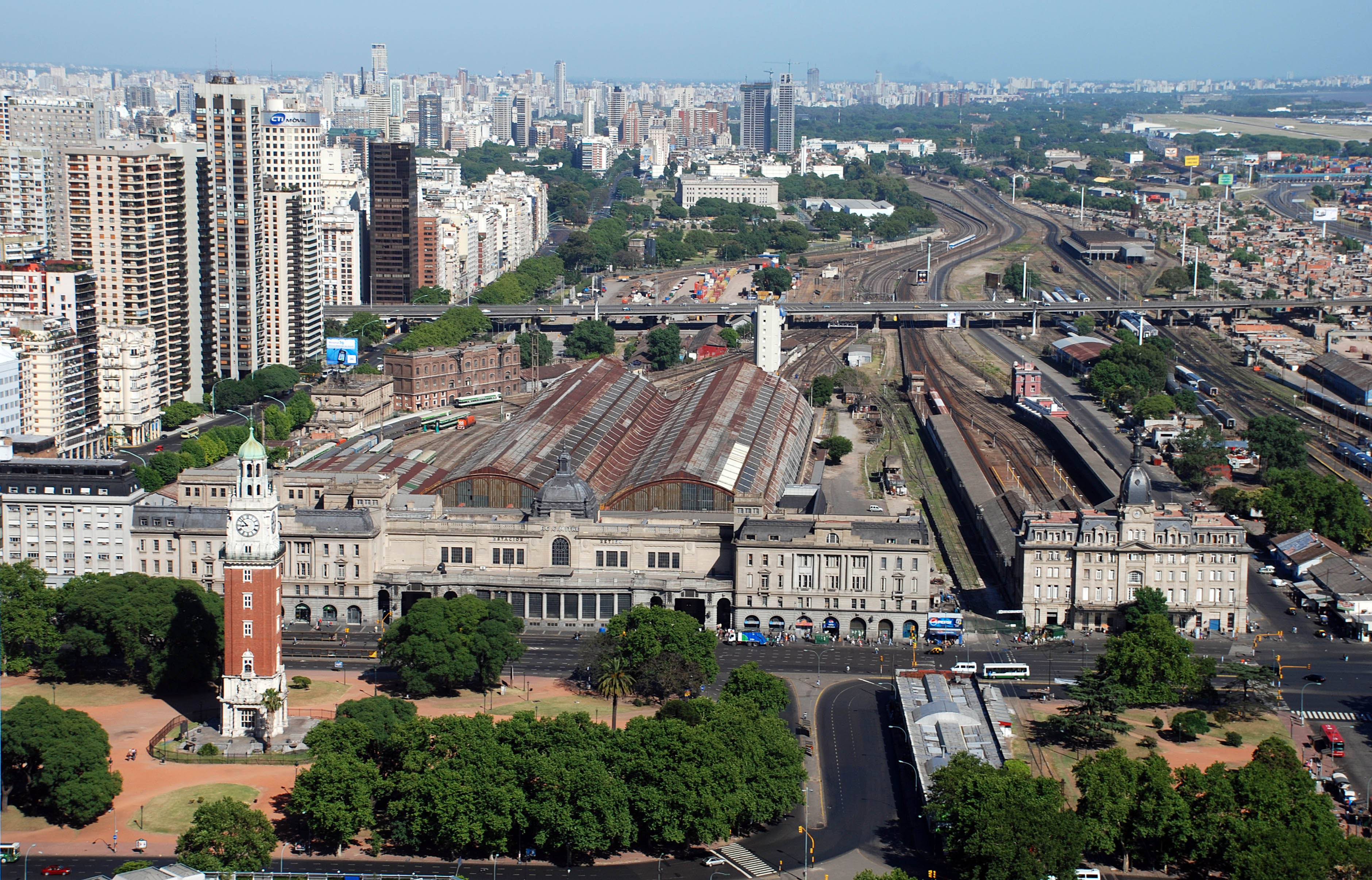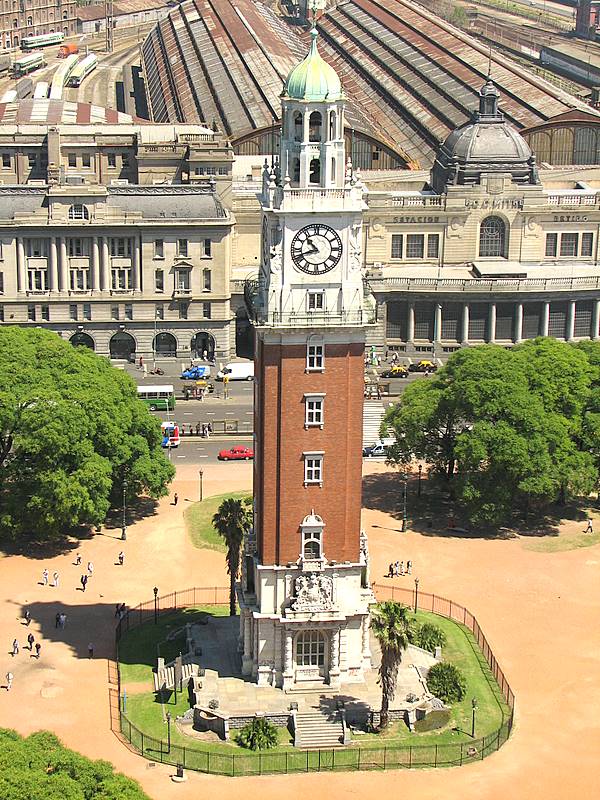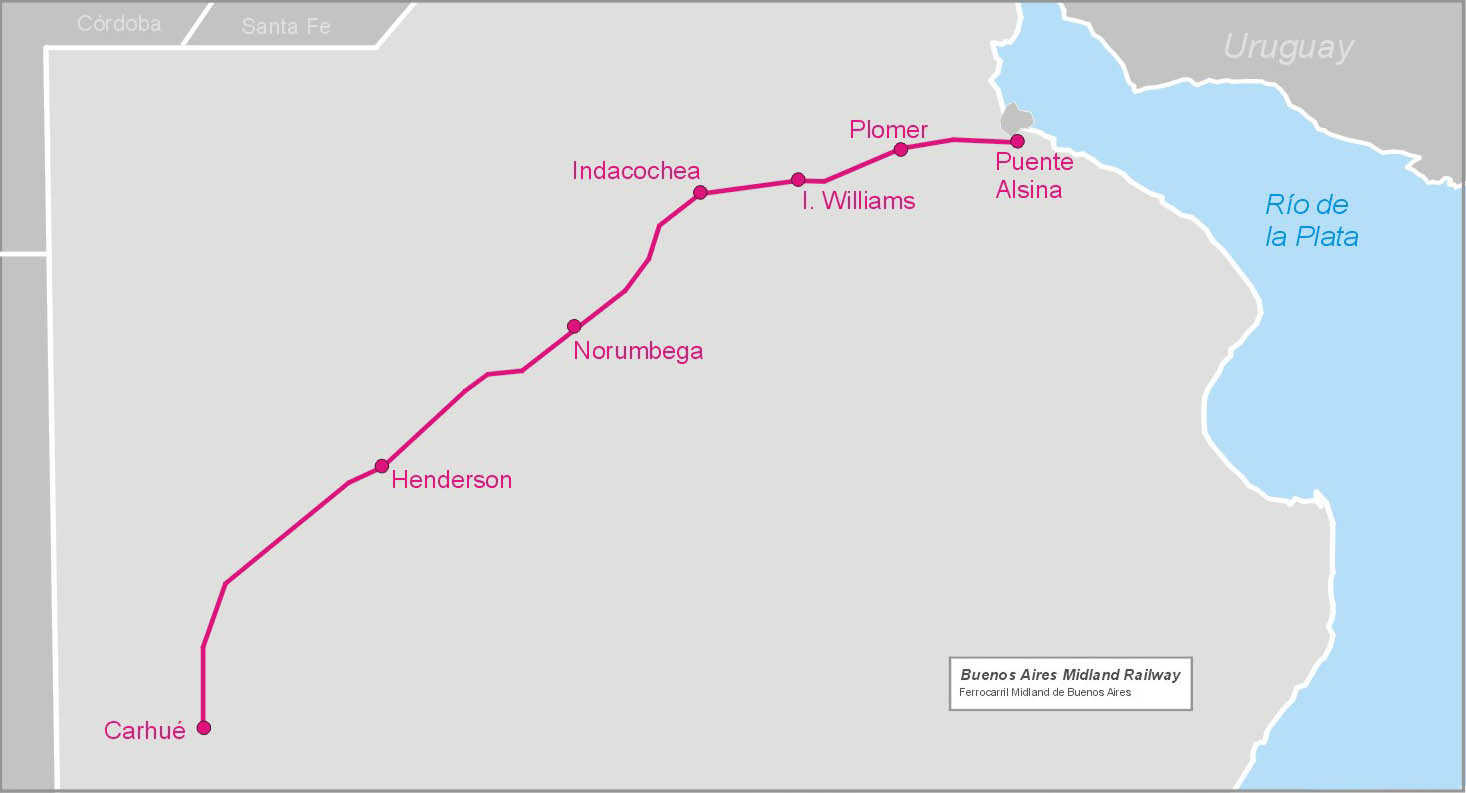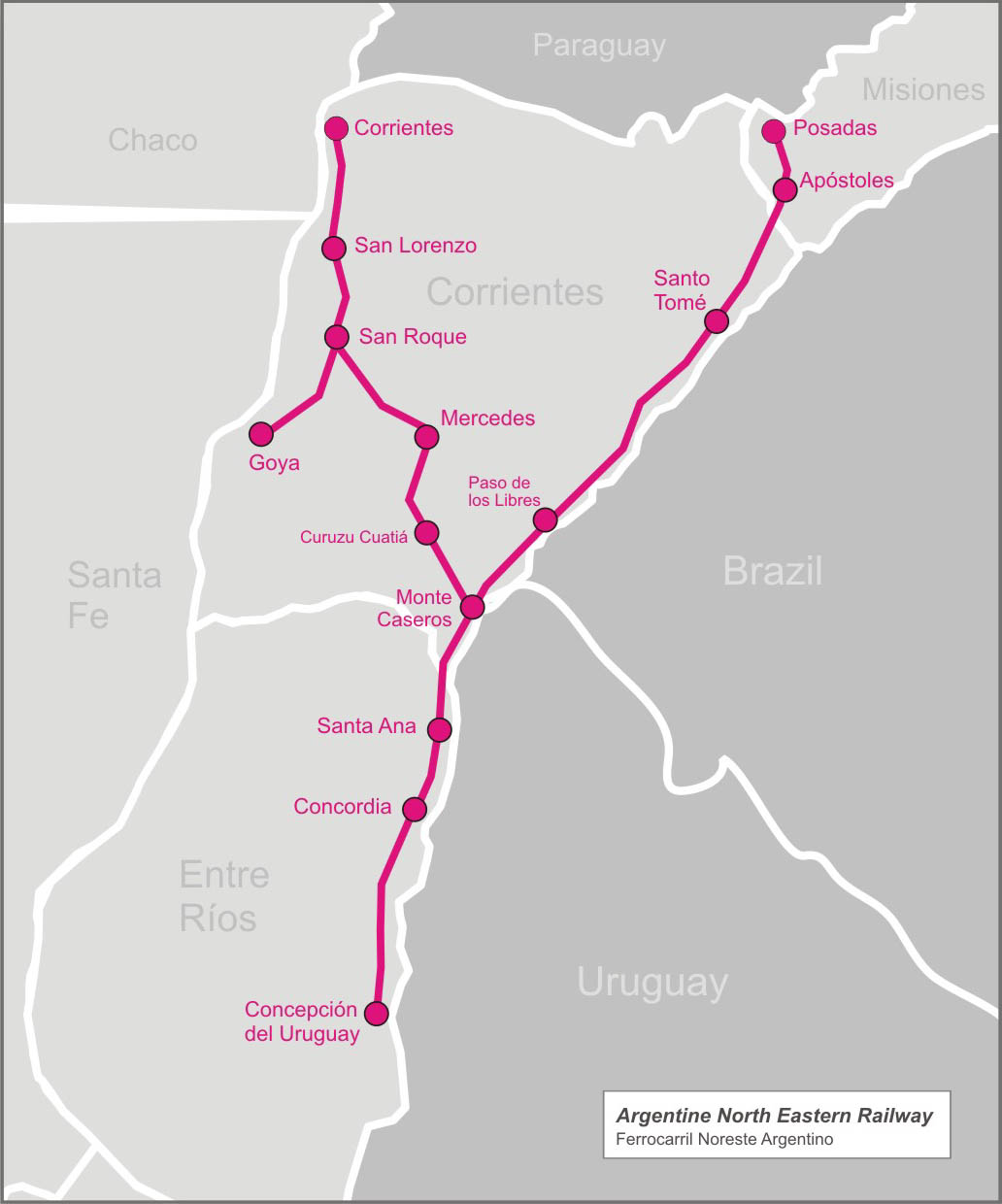|
Railway Nationalisation In Argentina
In 1948, during President Juan Perón's first term of office, the seven British- and three French-owned railway companies then operating in Argentina, were purchased by the state. These companies, together with those that were already state-owned, where grouped, according to their track gauge and locality, into a total of six state-owned companies which later became divisions of the state-owned holding company Ferrocarriles Argentinos. Background In the latter half of the 19th century British and French-owned railway companies had played an important role in the economic development of Argentina. Between 1856 and 1914 the nation's railway network grew to become the largest in Latin America. The foreign investment provided by these companies had helped to transform Argentina from a relatively underdeveloped, rural country, with many isolated communities, into one which was becoming an increasingly prosperous agricultural producer and exporter. The foreign-owned railway compan ... [...More Info...] [...Related Items...] OR: [Wikipedia] [Google] [Baidu] |
Central Argentine Railway
The Central Argentine Railway, referred to as CA below, (in Spanish: Ferrocarril Central Argentino) was one of the ''Big Four'' broad gauge, British companies that built and operated railway networks in Argentina. The company had been established in the 19th century, to serve the provinces of Santa Fe and Córdoba, in the east-central region of the country. It would later extend its operations to Buenos Aires, Tucumán, and Santiago del Estero. The railroad had a complicated relationship with its employees in the 1910s, and then it had a complicated relationship with the government of Argentina in the 1920s. History Origins In 1854, American engineer Allan Campbell sent a proposal to members of the government of the Argentine Confederation. Campbell wanted a study to be done on the construction of a possible railway line between cities of Rosario and Córdoba. The distance estimated was 247 mi (about 398 km) and the costs were in Argentine pesos ( GBP 1 = ... [...More Info...] [...Related Items...] OR: [Wikipedia] [Google] [Baidu] |
Ferrocarril Provincial De Santa Fe
Province of Santa Fe Railway (in Spanish: Ferrocarril Provincial de Santa Fe and in French: "Compagnie Française de Chemins de Fer dans la Province de Santa Fe") was a French-owned company that purchased a railway network built by the provincial government of Santa Fe in Argentina on 10 April 1900 and later extended it in the provinces of Chaco and Córdoba. After nationalisation in 1948 it became part of the state-owned company Belgrano Railway History Development The company had its origins in the signing of a contract between the Santa Fe Provincial government and John G. Meiggs Son & Co. for the construction of a line north from the city of Santa Fe in the direction of the agricultural colonies. The section from Santa Fe to Rafaela was opened on 1 July 1885 and from Rafaela to Lehmann on 1 May 1886. Later the same year branch lines were opened from Empalme San Carlos to San Carlos Sur on 1 July and from Santa Fe to Colastiné on 15 October, and the line from Lehma ... [...More Info...] [...Related Items...] OR: [Wikipedia] [Google] [Baidu] |
Ferrocarril Compañía General En La Provincia De Buenos Aires
Futbol Club Sonsonate is a Salvadoran professional football club based in Sonsonate, El Salvador. The club plays its home games at Estadio Anna Mercedes Campos, a stadium located in the City suburb of Sonsonate, Sonsonate, since 2009. The team is currently led by head coach Uruguayan Rubén da Silva. History On 9 September 2009, César Antonio Contreras and Miguel Antonio Castillo along with Pedro Antonio Contreras and with the support of the Sonsonate department (in particular the head of the department José Roberto Aquino) were able to re-activate Sonsonate from defunct status and begin their time in the modern era. The club competed in the Tercera División for a few years, before winning promotion to the Segunda División in 2011, under the direction of Ricardo Andrés Navarro. Despite strong club following and several finals appearances the club failed to win either the Segunda Division Apertura or Clausura title to achieve promotion in the Primera Division. However, o ... [...More Info...] [...Related Items...] OR: [Wikipedia] [Google] [Baidu] |
Rosario And Puerto Belgrano Railway
The Rosario and Puerto Belgrano Railway (Spanish: Ferrocarril Rosario y Puerto Belgrano, and in French: Compagnie de Chemins de Fer Rosario-Puerto Belgrano) was a French-owned railway company which operated a broad gauge, , single track line between the cities of Rosario and Puerto Belgrano in Argentina. Puerto Belgrano, near the city of Bahía Blanca in Buenos Aires Province, is the main naval base in Argentina. The original idea behind the building of the railway was to link points that were closer to either Rosario or Bahía Blanca than they were to Buenos Aires, thereby taking traffic from the British-owned companies BA Great Southern and BA Western railways. History Background Since the line was constructed after many other east to west lines had already been laid these were crossed by constructing a large number of bridges. The otherwise near level course of the line was broken, at intervals, by short sharp gradients and this had an effect on the type of locomotiv ... [...More Info...] [...Related Items...] OR: [Wikipedia] [Google] [Baidu] |
Central Bank Of Argentina
The Central Bank of the Argentine Republic ( es, Banco Central de la República Argentina, BCRA) is the central bank of Argentina, being an autarchic entity. Article 3 of the Organic Charter lists the objectives of this Institution: “The bank aims to promote, to the extent of its powers and within the framework of the policies established by the national government, monetary stability, financial stability, employment, and economic development with social equity. Establishment Established by six Acts of Congress enacted on May 28, 1935, the bank replaced Argentina's currency board, which had been in operation since 1899. Its first president was Ernesto Bosch, who served in that capacity from 1935 to 1945. The Central Bank's headquarters on San Martín Street (in the heart of Buenos Aires' financial district, known locally as the ''city''), was originally designed in 1872 by architects Henry Hunt and Hans Schroeder. Completed in 1876, the Italian Renaissance-inspired buildi ... [...More Info...] [...Related Items...] OR: [Wikipedia] [Google] [Baidu] |
US Dollar
The United States dollar (symbol: $; code: USD; also abbreviated US$ or U.S. Dollar, to distinguish it from other dollar-denominated currencies; referred to as the dollar, U.S. dollar, American dollar, or colloquially buck) is the official currency of the United States and several other countries. The Coinage Act of 1792 introduced the U.S. dollar at par with the Spanish silver dollar, divided it into 100 cents, and authorized the minting of coins denominated in dollars and cents. U.S. banknotes are issued in the form of Federal Reserve Notes, popularly called greenbacks due to their predominantly green color. The monetary policy of the United States is conducted by the Federal Reserve System, which acts as the nation's central bank. The U.S. dollar was originally defined under a bimetallic standard of (0.7735 troy ounces) fine silver or, from 1837, fine gold, or $20.67 per troy ounce. The Gold Standard Act of 1900 linked the dollar solely to gold. From 1934, its ... [...More Info...] [...Related Items...] OR: [Wikipedia] [Google] [Baidu] |
Retiro Railway Station
Retiro is the name of a railway station complex in Buenos Aires, Argentina, that includes three main terminal train stations ( Retiro-Mitre, Retiro-Belgrano and Retiro-San Martín) and two terminal subway stations ( Retiro of Line C and Retiro of Line E). The complex is named after the neighborhood where it is located, Retiro. It is close to Retiro Bus Terminal Station, the country´s biggest bus terminal. Overview The stations are very close to the Retiro bus station (''Terminal de Omnibus''), the principal long-distance bus terminal in Buenos Aires. The complex is also accessible by the C line of the Buenos Aires Metro system and by numerous local public bus services. The stations will also be accessible by both Line E and Line H of the metro once their extensions are complete. Three stations are located opposite Plaza San Martín, a large park. Services Commuter rail Retiro is the largest railway complex in Buenos Aires and more commuter trains arrive and de ... [...More Info...] [...Related Items...] OR: [Wikipedia] [Google] [Baidu] |
Torre De Los Ingleses
Torre Monumental (Spanish for "Monumental Tower"), formerly known as Torre de los Ingleses ("Tower of the English"), is a clock tower located in the ''barrio'' (district) of Retiro in Buenos Aires, Argentina. It is situated in the Plaza Fuerza Aérea Argentina (formerly ''Plaza Británica'') by Avenida San Martín and Avenida del Libertador. It was a gift from the local British community to the city in commemoration of the centennial of the May Revolution of 1810. After the Falklands War in 1982, the tower's original name was dropped, though some still call it ''Torre de los Ingleses''. History On September 18, 1909 the Argentine National Congress passed Law N° 6368, consisting of an offer by the British residents of Buenos Aires to erect a monumental column to commemorate the centennial of the May Revolution. Although the centenary monument was initially considered to be a column, it ultimately took the form of the clock tower. A 1910 exhibition of project proposals at the ... [...More Info...] [...Related Items...] OR: [Wikipedia] [Google] [Baidu] |
Buenos Aires Midland Railway
The Buenos Aires Midland Railway (BAM) was a British-owned railway company which operated in Argentina, where it was known as Ferrocarril Midland de Buenos Aires. The company built and operated the gauge ( metre gauge) line between Puente Alsina and Carhué in Buenos Aires Province. In 1948, the railways of Argentina were nationalised, the BAM becoming part of Belgrano Sur Line; the company closed as a result. Today services on the line are operated by the state-owned company Trenes Argentinos, the concessionary of Puente Alsina-Marinos del Crucero General Belgrano branch. History Background In 1904, the Buenos Aires Province granted entrepreneur Enrique Lavalle a concession to build a metre gauge railway line between Puente Alsina and Carhué. The company and line were named "Buenos Aires Midland Railway", so the Lacroze Brothers registered the Spanish form "Ferrocarril Central de Buenos Aires". Works were led by ideologue Eduardo Casey, who had founded the ci ... [...More Info...] [...Related Items...] OR: [Wikipedia] [Google] [Baidu] |
Argentine North Eastern Railway
The Argentine North Eastern Railway (ANER) (in Spanish: Ferrocarril Nordeste Argentino, also Ferrocarril del Nord-Este Argentino) was a British-owned railway company, founded in 1887, that operated a railway network in the provinces of Entre Ríos, Corrientes and Misiones in Argentina. When the company was nationalised in 1948 it became part of the state-owned General Urquiza Railway. History The company was founded in 1887 to take over and complete two lines from Monte Caseros in Corrientes Province. The first was to go to Corrientes (371 km), the provincial capital, and the second to Posadas (442 km), the capital of Misiones Province. In 1888 the company acquired a batch of 32 steam locomotives to Scottish manufacturer Neilson and Company. Construction of the line to Corrientes, completed as far as Curuzú Cuatiá in 1890, was extended to Mercedes in 1898 and finally reached Corrientes later in the same year. The Posadas line reached Paso de los Libres in 189 ... [...More Info...] [...Related Items...] OR: [Wikipedia] [Google] [Baidu] |
Entre Ríos Railway
The Entre Ríos Railway (ERR) (in Spanish: Ferrocarril Entre Ríos) was a British-owned railway company that built and operated a railway network in Entre Ríos Province, between the rivers Uruguay and Paraná, in Argentina. History The company began operation in 1892 by purchasing a rail network operated by state-owned Central Entre Ríos from the provincial government. Four years later the company purchased the Gualeguay to Puerto Ruiz line, built by "Ferrocarril Primer Entrerriano" in 1866, from the national government, and on 12 October 1899 a branch line from Gobernador Solá to Macía was opened. A line from Villaguay to Concordia, on the River Uruguay, was built in 1902 reaching Jubileo on 25 January, General Campos on 3 March and Concordia on 30 June where it joined the Argentine North Eastern Railway. Later the following branch lines were opened: from Las Colas to Enrique Carbó on 10 October 1906, from Caseros to Villa Elisa on 28 December 1906, from Cre ... [...More Info...] [...Related Items...] OR: [Wikipedia] [Google] [Baidu] |



